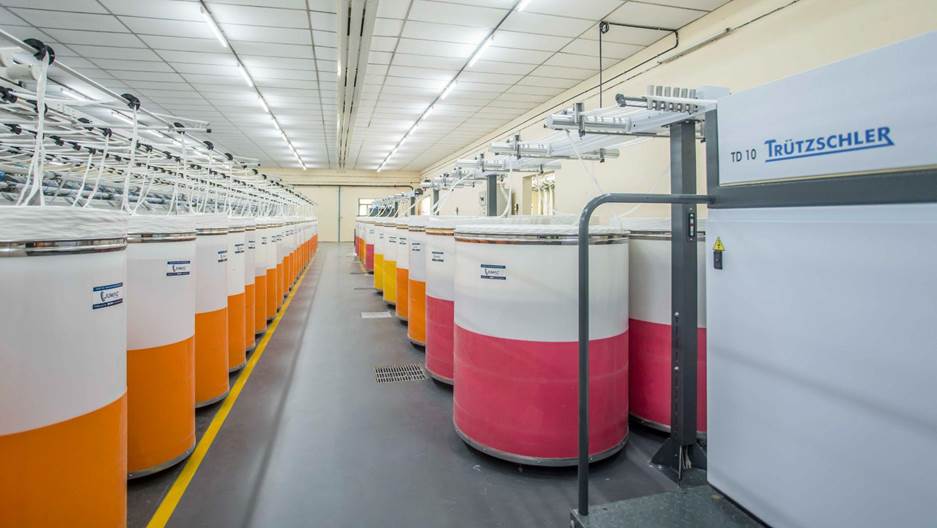In the fabric of our everyday lives, the textile sector occupies a mighty important place. Spinning mills lie right at the heart of this sector, transforming raw fibres into yarns that weave the foundation of textiles. In recent years, the textile sector has witnessed rapid technological advancements, globalisation of supply chains, and shifting market demands. These developments have ushered in a gamut of new possibilities.
However, on a day-to-day basis, spinning mills face several operational challenges and hurdles, threatening to undermine productivity, efficiency and overall yarn quality. From meticulous handling of sliver to the optimised management of spinning cans, the nature of these hurdles can be many and varied – and it is critical to identify and understand them, in order to come up with innovative, effective solutions.
We here present a comprehensive analysis of the operational problems at mills, with a view to contribute valuable knowledge to the textile industry.
Sliver Handling Problems: An Overview
Given the delicate nature of sliver, a host of problems can crop up if it is not handled properly. These include inconsistencies in sliver quality, issues during the carding, drafting and blending stages, defective feeding mechanisms (sliver feeding in roving frames), and others. There is also a high probability of sliver breakage, if there are problems in the sliver transportation system. Managing the short fibres and impurities, as well as controlling the moisture content in sliver also require close attention.
Spinning Into Trouble: Probable Issues Associated with Spinning Cans
Many of the problems a mill faces can be traced back to issues related to the spinning cans that are being used. These include:
Yarn breakage, Entanglement and Slubs – Happens due to improper handling, winding, loading, tension fluctuations and alignment problems of yarns in the cans.
Yarn contamination – Happens due to the presence of oil, dust and other foreign impurities in the cans.
Yarn slippage – Happens due to sub-optimal loading/handling of yarn inside the cans.
Static electricity – Happens during the winding and/or unwinding stage, due to accumulation of static charge.
Over time, there can be significant wear and tear in the spinning cans. The latter can get physically damaged as well. Such ‘defective’ cans are not able to provide the requisite protection to yarns.
Idle Spinning Cans = Loss of Productivity
Cans are not meant to lie idle and unattended on the mill floors. Such ‘idleness’ and imperfect capacity utilisation typically lead to considerable losses in mill productivity and overall revenue figures. In fact, every idle spinning can has its own opportunity cost, and represents missed production scopes and lost revenue. The longer cans remain unused, the greater is the risk of prolonged machinery downtime, inventory mismanagement, and mill efficiency levels going on a downward spiral.
Production inconsistencies are a direct result of idle times at a spinning mill, in the form of overlooked sliver cans and non-operating machinery. This, in turn, can lead to demand-supply mismatches (i.e., mills not being able to match up to existing demands), loss of customer trust, and other long-term disadvantages. Given that mills generally procure raw materials (e.g., cotton or other synthetic fibres) well in advance, production halts/delays cause additional financial costs, increased overheads, and considerable competitive disadvantages.
Yarn Mix-Ups: Common and Highly Problematic
A large spinning mill typically works with yarns of various qualities, varieties and colours. During any of the production stages, these yarns can get unintentionally mixed up with each other. Such ‘yarn mix-ups’ cause a wide range of problems, including discrepancies in final yarn quality, delays in production, resource wastage, unnatural colour/shade variations and more. Since mix-ups cause quality degradation, rejection risks become higher, and the reputation of the mill can be at stake.

Understanding the most common causes behind yarn mix-ups is vital. These include human errors, can labelling problems, inefficient yarn storage and handling, miscommunication, and no provisions for real-time can monitoring. When mill operators are not properly trained and/or there are errors in packaging (particularly during tight production schedules), yarn mix-ups are a common occurrence.
Smoothening The Problems: The Role of Technology
By now, we have established the common operational problems mills face, and their consequences. Let us now turn our attention towards getting an idea on how technology can be leveraged to monitor spinning cans efficiently, minimise downtime, and ensure production optimisation.
IIoT-based sensors, installed on cans to track real-time sliver status, enable remote monitoring and collect other data.
Machine learning (ML) and Predictive Analytics (PA), to minimise downtimes and schedule maintenance work.
Mobile applications, to monitor spinning cans, collect data for analysis, and ease service-related uncertainties.
Augmented Reality (AR), for diagnosing issues, maintenance guidance, and workflow improvement.
Cyber-Physical Systems (CPS), for seamless integration of physical processes with the latest digital technologies and automation tools.
How Can IIoT-Enabled Sliver Management Help?
Industrial Internet of Things (IIoT), a key component of Industry 4.0, can help optimise the usage of spinning cans on the mill floor. The real-time remote monitoring capabilities ensure greater visibility and centralised control, while data-driven automation eliminates yarn mix-up risks and other such issues. Greater efficiency in inventory management also paves the way for supply chain optimisation, minimal losses, and improved production planning. With ready access to data analytics and last-mile traceability, IIoT enables spinning mills to achieve higher operational efficiency, reduced costs, improved quality control, and a more streamlined production process.
The Final Word
Operational challenges cast a shadow on the seamless production possibilities of spinning mills. With the textile industry standing on the cusp of transformation, it is vital to identify these problems, and address them with a combination of skill, quality control and integration of advanced technology. After all, the thread of success for mills cannot be left to chance.



 (1)_Big.jpg)



Comments